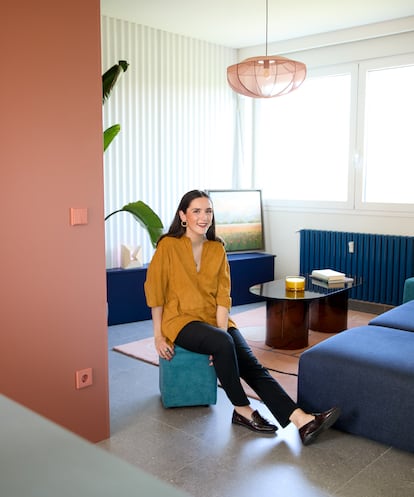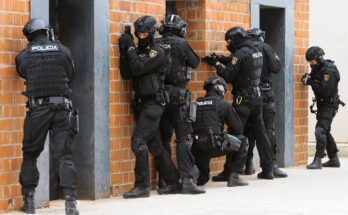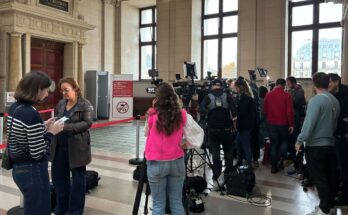Federica Aridon (Rome, 30 years old) was supposed to fly to Bangkok on March 26, 2020. But that plane never took off. “My idea was to go to work in Thailand, I already had a contract with a studio there called All Zone,” says the architect, sitting on the sofa of her apartment in the Carabanchel neighborhood of Madrid. He purchased it in 2023 and wanted to enclose his ideal home in it, in around 70 square metres: “I call it ‘the house of boxes’, because everything is very rational, like me. There is a service block, a kitchen area, another rest area… It is organized by colors and blocks, with a streak of creativity, playfulness”. Achieving this goal was not easy; This totally personal project was a challenge. “I did 50 tests of the floor,” he says, “because it had infinite possibilities, it was very divided, there were five bedrooms, a mini-living room, kitchen and bathroom”. He created a single space consisting of a living room, dining room and kitchen, with a separate bedroom-dressing room and bathroom. The colors – blue, tiles and mustard yellow – divide the floor and at the same time make it unique. “The color is not extravagant. Before it was normal: each brother had a room of one tone, my grandmother had wallpaper on all sides, there were burgundy, vitrified bathrooms… Now there is standardization, we believe that to be modern or sophisticated everything must be white and beige”, he defends.
That singularity on which Aridon insists is the axis of the studio in which he works, OOIIO Arquitectura, founded in 2010 by Joaquín Millán Villamuelas. Not being able to go to Thailand, after a season of work in Barcelona he decided to settle in Madrid. “My mother is from here, I have a family, it was a convenient choice. OOIIO seemed like a fresh studio, unusual in its way of approaching and relating to a project”, he explains. Their office is in Carabanchel and they have carried out many of their projects there. “It’s clear that you always have to invest something, but you don’t need to have an infinite budget or resources to have a good product. We try to achieve a lot with less,” he says. In an era of gentrification of big cities, it is time to rethink the suburbs: “In Italy, Venice, Naples or Florence are no longer places with an identity. In Rome I didn’t go walking in the center on Sunday, it’s unthinkable, they kicked us out. Identity is in the suburbs, there you can live neighborhood life, what people are looking for. In the case of Madrid, there are no houses. The city is saturated and more and more people are arriving.”

And each city, he underlines, has its own particularities: “The Roman urban typology is completely different from that of Madrid. All the houses there are external, there are no internal patios…”. Although she didn’t initially intend to study Architecture, but rather Mathematics – her parents are aeronautical engineers – she thinks growing up surrounded by Roman beauty influenced her decision. “I grew up in a heavy historical and architectural context,” he acknowledges, “and when I was in high school I went to live in the United States with a family where the father was an architect, in Virginia. I saw the blueprints, the models, the creativity, that hustle and bustle of things that happen in a studio. My parents had very serious office jobs.”

She studied at La Sapienza University, did Erasmus in Munich and was part of a finalist team in the sustainable design competition in Changzhou (China), which led her to become interested in the possibilities of Asia and to focus on an eco-friendly approach and the economy of materials. “The first prize was won by SOS, the school of Mario Cucinella (an influential architect from Palermo who stands out in the field of sustainability). In Changzhou they were creating a new neighborhood that would be zero-emission and self-sufficient,” he recalls. This concern characterizes their sector today —“Increasingly, private builders tend to make a larger investment at the beginning so that the house is more efficient and then the expense is recovered by spending less on water, electricity and energy”— at a time when the debate on housing continues to be in the news and leads to revisiting the challenges of their profession: “Before the pandemic, a lot of tailor-made family housing was required, then unique reforms arose… The economic and social world is changing, and we adapt.”



